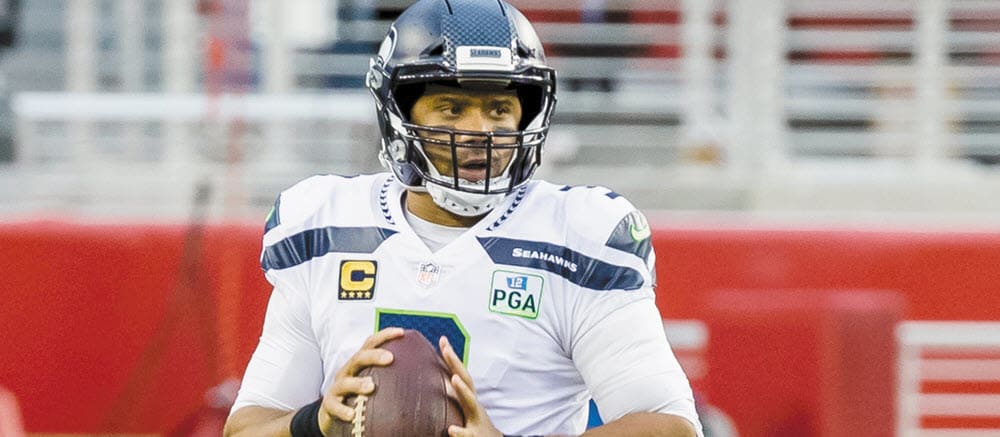This article is part of our Hidden Stat Line series.
I love putting this together. Really, I do. But I can't deny I'm happy to see a couple teams on bye, even if it forced me to start Noah Fant instead of George Kittle in Luke Hoover's vampire league. My main focus here is on usage, but I'll also mix in some observations from games I watched on NFL GamePass (condensed versions are a beautiful thing) and the one I saw in-person (don't wanna talk about it).
All feedback is encouraged, be it positive, negative or neutral. Time constraints are a factor for every breakdown apart from the Thursday night game, so I'm happy to discuss anything I missed in the comments below or on twitter (@RotowireNFL_JD).
 Eagles 34
Eagles 34  Packers 27
Packers 27
Eagles
- Jordan Howard logged a season-high 53 percent snap share in his blowup performance, essentially pushing Darren Sproles (11 percent) out of the backfield picture, while Miles Sanders stayed in his usual range with 13 touches and a 35 percent share. Howard was charged with his second drop of the season, but the Eagles don't seem to mind keeping him on the field for pass plays, perhaps because his reputation for effective blocking has carried over from Chicago so far — no pressures or hurries allowed on 12 pass-blocking snaps. Sanders, on the other hand, already has been charged with two hurries on 13 such snaps.
- It was a rough night for people who forgot to take Nelson Agholor out of their lineups after last week — zero catches on one target despite playing 90 percent of snaps.
- Alshon Jeffery played 81 percent of snaps and led the team with nine targets in his return from a calf injury. He struggled against Green Bay's emerging stars at cornerback, catching just two of eight passes when Jaire Alexander or Kevin King had primary coverage, per PFF.
- Mack Hollins (65 percent) and J.J. Arcega-Whiteside (10 percent) were deemphasized, with Jeffery returning from injury and the team using more 12 personnel (two TEs).
- I mostly stay objective in this space, but sometimes a man is just in the mood to say Dallas Goedert is better than Zach Ertz, relying on his eyes rather than statistics. To be clear, I'm praising the youngster, not criticizing the veteran.
- Speaking of which... Ertz dropped down to 76 percent of snaps Thursday night, his second-smallest share in any game since the beginning of last season. Goedert played a career-high 69 percent, joining Ertz in two-TE formations and also poaching some work in 11 personnel. Ertz saw 20 routes and three pass-blocking snaps on Wentz's 29 dropbacks, while Goedert had 14 and four, respectively. The 24-year-old has been used as a blocker on a higher percentage of his pass-plays snaps, including 18.4 percent last season, compared to just 10.6 for Ertz. (This is the part where I preach caution, noting that it's essentially unheard of for a WR or TE to provide consistent fantasy production while running routes on less than half his QB's dropbacks. Dynasty players pay no mind; Goedert is too good not to be an asset by 2020.)
Packers
- Aaron Rodgers looked more aggressive Thursday night, but he's on pace to lead the league in throwaways (12) for a second straight year, per PFF. In fact, many of his numbers are eerily similar to last season's:
- Completion percentage: 2018 (62.3), 2019 (62.3)
- YPA: 2018 (7.4), 2019 (7.3)
- TD percentage: 2018 (4.2), 2019 (4.1)
- The one big improvement? His sack rate has dropped from 7.6 percent to 5.2 percent.
- Aaron Jones took the third-largest snap share (84 percent) of his career, only losing a few plays to fullback Danny Vitale on passing downs after Jamal Williams suffered a scary head/neck injury at the very beginning of the game. Jones could be headed for a three-down role next week in Dallas, but don't be fooled by his seven targets Thursday — he's mostly been a low-impact pass catcher, ranking 44th among 51 RBs last season (25-target min.) with 1.01 yards per route, per PFF. Jones has a career mark of 0.74 yards per route, compared to 0.96 for Williams. Granted, the Packers have sent 20.3 percent of targets to RBs this season, up from 17.2 percent in 2018 and 17.5 percent in 2017. The difference isn't big enough to reach conclusions after a four-game sample, but it isn't crazy to think this might be intentional with a new coaching staff. I'm really just going around in circles now, aren't I?
- Marquez Valdes-Scantling played 86 percent of snaps, running routes on 52 of Rodgers' 59 dropbacks. MVS drew two targets 20+ yards downfield for a second straight week, but neither was a completion, and his lone chance at the goal line was an interception on the deciding play of the game.
- Geronimo Allison played 79 percent of snaps, after landing between 44 and 49 percent each of the previous three weeks. His role as the primary slot receiver didn't change, but the Packers increased their use of 11 personnel — they averaged 2.59 WRs on the field per snap, up from 2.39 in Week 3, 2.42 in Week 2 and 2.43 in Week 1. It may have been matchup-specific, considering Philadelphia has been great against the run and weak against the pass.
- Jimmy Graham turned nine targets and a 70 percent snap share into a 6-61-1 receiving line, running 45 routes on Rodgers' 59 dropbacks (76 percent). The tight end ran a route on just 55 percent of dropbacks the first three weeks, playing 57 percent of the total snaps on offense. Graham should still be treated with caution, as his usage may drop back to the Week 1-3 level when Green Bay isn't facing a pass-funnel defense like Philadelphia's.
 Redskins 3
Redskins 3 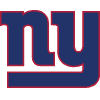 Giants 24
Giants 24
Redskins
- Dwayne Haskins had one completion and three interceptions on five pass attempts 10-plus yards downfield, per PFF.
- Case Keenum overthrew an open Trey Quinn on two deep passes in the first half. Quinn thus finished with 88 air yards on four targets, bumping his aDOT up to a still-low 7.6 for the year.
- Paul Richardson landed in his usual range with 88 percent of snaps, while Kelvin Harmon (57 percent) and Robert Davis (43 percent) split Terry McLaurin's role (F1 was out with a hammy). Quinn played 75 percent, running 29 routes on his team's 33 dropbacks, per PFF.
- In terms of yards per route — and any other metric, really — Thompson (2.51) and McLaurin (2.16) have been way better than Richardson (1.03), Vernon Davis (0.99) and Quinn (0.75), per PFF.
- Chris Thompson led the backfield in snaps (53 percent) for a fourth time in as many games, ahead of Adrian Peterson (39 percent) and Wendell Smallwood (8 percent). Thompson's 2.51 yards per route is second-best among RBs with double-digit targets, trailing only Austin Ekeler (2.70), per PFF.
Giants
- Daniel Jones had an aDOT of 5.2 in Week 4, down from 10.1 in his first start. He threw four interceptable passes in the first half, including two that actually were picked off. Jones also made a bunch of short/intermediate throws into tight windows, finishing with a completion percentage (74.2) higher than his xCOMP% (69.8), per NFL Next Gen Stats. He threw 26 percent of his passes to receivers within one yard of a defender — the league's third-highest rate in Week 4, and a similar number to his first start (28 percent). This is a good time for a reminder that "throwing it short" doesn't always equate to "playing it safe".
- Wayne Gallman took 60 percent of snaps and 25 of 38 RB opportunities (66 percent). He lost a fumble, but so did Jon Hilliman, who had a 10-33-0 rushing line and no targets on 35 percent of snaps.
- Elijhaa Penny played 18 percent of snaps and got three carries on the final drive, lining up as a fullback on eight of his 13 plays, per PFF.
- Evan Engram played 73 percent of snaps and ran a route on 27 of Jones' 34 dropbacks, per PFF. The tight end saw six of his seven targets within 10 yards of the line of scrimmage, per PFF. Engram's 5.4 aDOT for the season is eight-lowest among 33 TEs with double-digit targets, per airyards.com.
- Sterling Shepard played 90 percent of snaps and ran a route on each of Jones' 34 dropbacks. He drew eight of his nine targets from the slot, where he's now run 101 of his 127 routes this season, per PFF. Shepard has drawn a target on 20.8 percent of those slot routes, catching 17 of 21 passes for 195 yards and a TD (1.93 yards per route). The sample working outside is much smaller — four targets on 25 routes (16 percent), with three catches for 23 yards (0.92 yards per route). I mention all this because Golden Tate will return from a suspension for Week 5, presumably taking some (or even most) of those slot snaps.
- Shepard more than held his own on 251 outside routes last season, drawing a target 17.5 percent of the time, compared to 16.6 percent in the slot, per PFF. He also had 1.70 yards per route outside, but only 1.27 in the slot. 9.7 YPT outside, 7.7 in the slot — you get the idea. Shepard was more efficient in the slot his first two seasons (2016, 2017), but the sample of outside routes was fewer than 90 in both cases. Adding it all up, there hasn't been much of a difference in his outside/slot production for his career.
- The other WRs shared playing time — 63 percent for Bennie Fowler, 44 percent for Darius Slayton, 35 percent for Cody Latimer, 9 percent for Cody Core. They had just four targets combined; two apiece for Fowler and Slayton.
 Chiefs 34
Chiefs 34 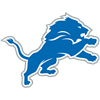 Lions 30
Lions 30
Chiefs
- Patrick Mahomes' 12.2 aDOT was his highest in any game this season. He went 0-for-6 on passes 20-plus yards downfield, but 9-for-12 in the 10-to-19 range, per PFF. In addition to everything else he's done this season, his 1.9 percent sack rate is best in the league among 34 qualified passers. He also leads the league or is tied for the lead in YPA (9.7), touchdowns (10), interception rate (0.0), yards per completion (14.2) and passer rating (120.4). Of course, fantasy owners probably noticed that Sunday's game was his first without a passing or rushing touchdown since Week 17 of 2017.
- LeSean McCoy handled 46 percent of snaps and 15 of 27 RB opportunities (56 percent). He got three carries at the goal line (on consecutive plays), converting the third for a TD. Darrel Williams also got three goal-line carries — all in the fourth quarter — and scored twice.
- Williams played 54 percent of snaps, including the entire game-winning drive. However, his advantage in routes was small — 23 to 18 over McCoy, per PFF. The Chiefs have kept McCoy in the game for some passing downs, including 3rd-and-longs, but they clearly prefer Williams for their no-huddle offense (he also got the two-minute drill at the end of the first half). Given that he's been with the team for less than a month, McCoy probably isn't as comfortable as Williams with figuring out play calls on the fly.
- McCoy averaged 3.3 yards after contact, compared to 1.0 for Williams, per PFF. Of course, Williams only saw five carries that weren't at the goal line, so it's not like he had a ton of opportunity to pick up extra yards. For the season, neither back has been especially good at gaining those unblocked yards. Among 55 RBs with at least 15 carries, McCoy ranks 49th in PFF's elusive rating, with four avoided tackles on 49 touches and an average of 2.65 yards after contact (35th) on 40 carries. Williams is 53rd in elusive rating, with two avoided tackles on 25 touches and just 1.59 yards after contact on 17 carries (52nd).
- Before any Damien Williams owners get too excited, I'll note that he was 60th of 72 RBs (50-carry minimum) in PFF's elusive rating last year. Kareem Hunt was No. 4, FWIW.
- Sammy Watkins ran a route on 46 of Mahomes' 47 dropbacks, with Travis Kelce (44) and Demarcus Robinson (43) close behind.
- Mecole Hardman ran 29 routes on 63 percent of snaps, playing just 15 of his 43 snaps (35 percent) from the slot, per PFF. The rookie played more than half his snaps inside the previous two weeks, while Travis Kelce actually got more work out wide than he did in the slot. That changed against the Lions, with Kelce logging 31 inline snaps, 27 slot snaps and just eight outside snaps, per PFF.
Lions
- Matthew Stafford continued his downfield-heavy approach with a 10.9 aDOT, pushing him to 11.1 for the year (second longest, behind only Fitzmagic).
- Kerryon Johnson handled 70 percent of snaps and 29 of 39 RB opportunities (74 percent), with his 92 yards after first contact (3.54 per carry) leading the league in Week 4, though he only got credit for three tackles avoided, per PFF. Johnson's goal-line fumble was a disaster for his team, but he's still the only player on the team with a carry inside the 5-yard line (four of them) this year. He also has nine of the 10 carries inside the 10-yard line.
- Ty Johnson played just 14 percent of snaps.
- J.D. McKissic took 35 percent of snaps, with six in the backfield, 16 in the slot and four out wide, per PFF.
- Marvin Hall filled in for Danny Amendola (chest), playing 38 percent of snaps and running a route on 22 of Stafford's 40 dropbacks, per PFF.
- With T.J. Hockenson (shoulder, concussion) knocked out of the game after 42 snaps and 13 routes, the Lions used TEs Jesse James and Logan Thomas on 14 routes apiece.
- Marvin Jones and Kenny Golladay both ran 38 routes on the 40 dropbacks. Golladay scored the touchdowns and drew more targets, but Jones was still an important part of the offense, catching both of his targets 20-plus yards downfield and also drawing one look in the red zone.
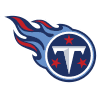 Titans 24
Titans 24  Falcons 10
Falcons 10
Titans
- I thought up a clever little line last week to make fun of Marcus Mariota, even writing it down Saturday to be sure I didn't forget. Now I have to audible — hopefully like Peyton Manning in his prime, not like Jared Goff after his helmet communication with Sean McVay cuts off. I've repeatedly been critical of Mariota, noting how his lack of pocket presence and excess of caution prevent him from taking advantage of his positive traits — speed, arm strength, accuracy. The Titans have done him no favors, cycling through various play callers who all favored a run-heavy offense with sophisticated pass concepts. Asking Mariota to progress through more than one or two reads is a bad idea, and it gets even uglier when an insistence on "establishing the run" leaves the QB throwing most of his passes in situations where the opponent expects a throw (3rd downs, 2nd-and-longs, playing from behind after halftime).
- We finally saw a better plan Sunday when the Titans scored 14 points on their first three drives, with 11 passes, six Derrick Henry carries and one zone-read keeper for Mariota. Perhaps most important, all but one of those passes came out quick, including a smart throwaway in a spot where Mariota often prefers running backwards for a 12-yard sack. When all was said and done, his average time from snap to throw was 2.57 seconds, eighth-quickest in the league for Week 4 and a big difference from his marks in Weeks 3 (3.0), 2 (2.84) and 1 (3.04). I'm telling you this because I find it interesting, not because I think it represents some monumental turning of a corner. The Titans went back into their shells once they built a lead, and the early success was largely a product of terrible defense from Atlanta on short and intermediate passes. I'm not sure if the Titans will actually take advantage, but this at least gave us an interesting template for how they can avoid the type of humiliating performances that seem to happen about five times per year in the Mariota era.
- Mariota's aDOT in Week 4 was 5.7, bringing his number for the year down to 7.6 (24th-longest of 39).
- Derrick Henry played 75 percent of snaps, the second-largest share of his career (after Week 17 of 2017). He even ran more routes (17) than Dion Lewis (12), whose 28 percent snap share was his smallest as a Titan. Game script obviously played a big role, with Henry getting 15 of his 27 carries on Tennessee's final two drives (which featured just two passes).
- Lewis had a real role in the passing game with five targets, but three of his four carries came deep in Tennessee territory within the final 30 seconds of the half — junk work.
- Corey Davis played 88 percent of snaps and ran a route on 24 of Mariota's 29 dropbacks, but the WRs otherwise rotated — 59 percent and 15 routes for Tajae Sharpe; 44 percent and 16 routes for A.J. Brown; 41 percent and 18 routes for Adam Humphries (per PFF).
- Brown has now produced a team-high 2.72 yards per route and 13.1 yards per target, averaging 11.3 YAC per reception. None of those numbers is sustainable with a larger workload, but they give him a strong case to take over the snaps that have been going to world-renowned run blocker Tajae Sharpe.
- Delanie Walker played just 31 percent of snaps and ran 12 routes, with Jonnu Smith (67 percent, 12 routes) and MyCole Pruitt (59 percent, seven routes) gobbling up the work in two-TE formations. Walker now ranks third on the team with 91 routes on Mariota's 147 dropbacks this season, behind both Davis (114) and Humphries (96). Oddly enough, Walker typically comes off the field when the Titans use two-TE sets, but it hasn't been a huge problem in terms of target volume because the team is so painfully predictable with its run/pass split based on formation. A more dynamic offense theoretically would be bad news for Walker's volume, though it could help with efficiency and TD opportunities.
Falcons
- Matt Ryan fell three yards shy of becoming the fourth player to throw for 400 yards in a game without any touchdowns or interceptions. Warren Moon (1991) and Bernie Kosar (1986) did it in wins, while Matthew Stafford (2017) did it in a loss — each instance involved either four or five field goals for the QB's team.
- Devonta Freeman handled 58 percent of snaps and 21 of 27 RB opportunities (78 percent), but Ito Smith (42 percent snap share) got the only goal-line carry and punched it in. Smith has taken both of Atlanta's carries inside the 5-yard line this season, and he has three of four inside the 10.
- Julio Jones, Mohamed Sanu and Calvin Ridley each handled snap shares between 75-to-79 percent, running either 52 or 51 routes.
- Austin Hooper ran 47 routes, leading all TEs in Week 4 and bringing him up to the highest total for his position (149) on the season, per PFF. Also, I was part of an interesting discussion on twitter about how Hooper tends to do better when his team does worse. In fact, he has a negative fantasy scoring correlation with Ryan since the beginning of last year. It kind of makes sense — the Falcons want to throw the ball to Julio Jones and Calvin Ridley, but end up settling for Hooper and/or Sanu when opponents successfully take away the more efficient options. There's probably also some aspect of facing softer "prevent" zones that favor tight ends, running backs and slot receivers while playing with a multi-score deficit. Anyway, here's the twitter thread if anyone cares to read it: https://twitter.com/AdamHarstad/status/1178363710026506240
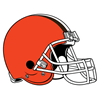 Browns 40
Browns 40  Ravens 25
Ravens 25
Browns
- Baker Mayfield's 5.7 aDOT was fourth-shortest of the week, with 73 percent of his 342 passing yards coming after the catch. Jarvis Landry (concussion) single-handedly had 124 YAC.
- Landry did his damage without a single target 20-plus yards downfield, catching six of eight passes within 10 yards of the line of scrimmage, along with two of two in the 10-19 range, per PFF. Landry was ineffective in a new role last season, with his aDOT jumping to 11.9 after four straight years below 7.5 in Miami. Fantasy owners generally want their wide receivers getting chances downfield, but Landry is a clear exception.
- Nick Chubb played 64 percent of snaps, handling 24 of 28 RB opportunities (86 percent) before Dontrell Hilliard took five carries on the meaningless final drive. Hilliard also poached some snaps on passing downs — something he hadn't done the previous week when Chubb played 67 of 68 snaps.
- Chubb dodged three tackles on his first touchdown, and on his third touchdown — the 88-yarder — he reached the second-fastest speed (21.95 mph) by any ballcarrier in the NFL this year. (Cordarrelle Patterson hit 22.23 mph on a carry in Week 2).
- Odell Beckham was shadowed by cornerback Marlon Humphrey, who held Sammy Watkins to 2-10-0 on three targets the previous week, per PFF. Humphrey had safety help for most of the game, with Baltimore typically opting to keep both Earl Thomas and Tony Jefferson out of the box. No need to panic for OBJ owners; the Ravens made it a point to shut him down and force the rest of the team to beat them (LOL).
- Damion Ratley worked as the No. 3 receiver again, playing 67 percent of snaps, while Taywan Taylor got just 13 percent.
- Demetrius Harris played 67 percent of snaps but mostly was on the field for run plays, while Ricky Seals-Jones ran 15 routes on 21 snaps, per PFF. Fellow tight end Pharaoh Brown was truly just a blocker, running three routes on 33 snaps.
Ravens
- Lamar Jackson's 8.5 aDOT on Sunday brought his season mark down to 10.2, which is still fourth-longest in the league. He received the highest PFF grade (80.9) among Baltimore's Week 4 starters on offense, suffering from three drops and a fourth-down miscommunication with Mark Andrews. The tight end clearly blamed Jackson for the embarrassing mixup, and it was the second week in a row where the Ravens had a miscommunication on a fourth down (Andrews and Marquise Brown ran to the exact same spot on a play against the Chiefs). Jackson wasn't the problem for the Ravens in this game, and both of his interceptions came while trailing by two TDs in the final six minutes.
- Mark Ingram handled 46 percent of snaps and 54 percent of RB opportunities. He stayed on the field for some passing downs, but Baltimore also used Gus Edwards (29 percent snap share) on early downs and Justice Hill (23 percent) in various situations. Ingram was efficient picking up yards again, but his lost fumble in Cleveland territory was a killer for the team.
- Marquise Brown played 81 percent of snaps and ran a route on 37 of Jackson's 39 dropbacks, per PFF. Hollywood didn't see a single target 20-plus yards downfield, after drawing at least two deep passes in each of the team's first three games. His six targets Sunday produced four catches for 22 yards and a pair of drops (including one in the end zone). Cleveland gave him 8-to-10 yards of cushion on nearly every snap, but the Ravens probably should've tried at least one deep shot against a secondary missing three of its four starters (eye-roll).
- Willie Snead played a season-high 75 percent of snaps and ran 30 routes. Seth Roberts got 62 percent and 27 routes. Miles Boykin, 30 percent and 11 routes. Chris Moore, 16 percent and two routes. My opinion as a Ravens fan? They're all essentially worthless, which explains why Brown is already being asked to do so much for the offense.
- Andrews took just 42 percent of snaps in a game where the Ravens never had a lead and spent about 40 minutes playing from behind. He ran 22 routes on Jackson's 39 dropbacks, with eight targets continuing the trend of a ridiculous target/route ratio (like i said before, Baltimore has zero pass-catching depth). Andrews' eight targets included the aforementioned miscommunication and a pair of interceptions. He looks fine to the naked eye, but it is possible the foot injury that's been keeping him out of practice is also impacting his playing time and/or effectiveness.
- Hayden Hurst played 22 percent of snaps, catching two passes for 39 yards on back-to-back plays in garbage time (he had another gain for 27 yards wiped out by a penalty on the next snap). Nick Boyle led the tight ends with a 59 percent snap share, but only ran 15 routes.
 Raiders 31
Raiders 31  Colts 24
Colts 24
Raiders
- Derek Carr's 6.4 aDOT is fourth-lowest in the league. I have no idea why I keep updating you on this — he's been playing the same way (i.e. scared) ever since Jon Gruden was hired.
- Tyrell Williams accounted for 64 percent of Oakland's air yards in this game, bringing his share for the season to 39 percent (10th-largest). Of course, his target share is only 19 percent, and his raw total for air yards (331) ranks 32nd among WRs. Regression awaits.
- Darren Waller's 29 percent target share is fourth largest in the league overall, and four percentage points higher than any other tight end (Zach Ertz, George Kittle). Waller's 5.3 aDOT is the shortest among all WRs and TEs with target share above 20 percent, while his 89 percent catch rate (33 of 37 targets) leads all qualified TEs and WRs. The catch rate isn't sustainable, but Waller's combination of usage and talent should allow him to rank among the league leaders, if not quite all the way at the top.
- Josh Jacobs played 54 percent of snaps, his largest share since 73 percent in Week 1. He handled 19 of 33 RB opportunities (58 percent), losing six carries and three targets to DeAndre Washington, along with three carries and a target to the check-down artist formerly known as Jalen Richard.
- End-around hero Trevor Davis played 55 percent of snaps, second most among Oakland's WRs. Hunter Renfrow got 42 percent, and Hard Knocks star Keelan Doss saw 22 percent.
- Waller and Williams were the only players with more than 14 routes on Carr's 32 dropbacks, per PFF.
Colts
- Jacoby Brissett had the fourth-most dropbacks (50, per PFF) and second-most air yards (484, per airyards.com) among all quarterbacks in Week 4. His aDOT for the season is now up to 7.4, placing 26th among 39 qualified QBs.
- The Colts dropped five passes, including three (on five targets) by Eric Ebron, per PFF.
- Chester Rogers led the team with 39 routes, followed by Deon Cain (38), Zach Pascal (35), Jack Doyle (31), Parris Campbell (30), Nyheim Hines (22) and Ebron (20), per PFF. Each player saw 5-to-8 targets.
- None of the Colts' skill-position players logged more than 73 percent of snaps, but Doyle, Cain, Rogers, Pascal and Campbell each landed in the 63-to-73-percent range. (Ebron saw just 35 percent).
- Marlon Mack's 36 percent snap share was partially the product of an ankle injury, but he didn't actually leave the game until late in the third quarter. Hines finished with 45 percent, and Jordan Wilkins got 21 percent.
- Mack is tied for 19th among RBs with 71 routes, but his 0.37 yards per route are good for 58th among 63 players at the position with five or more targets, per PFF.
- Hines has more yards (74) on fewer routes (54), ranking 25th at 1.37 yards per route.
 Patriots 16
Patriots 16  Bills 10
Bills 10
Patriots
- Tom Brady fell shy of four yards per pass attempt for a fifth time in 271 regular-season starts, and the first time since 2006, per PFR's play index. It's only ever happened in intradivision games, including thrice against the Dolphins.
- I was wrong about the Patriots continuing to stay away from 21 personnel with James Develin (neck) on injured reserve. Replacement fullback Jakob Johnson played 19 snaps, including 12 plays as a run blocker, per PFF. He definitely missed a block on Sony Michel's second carry of the game, but Michel ultimately averaged 5.7 yards on his nine carries from 21 personnel, compared to 1.5 YPC on his other eight totes. New England's power running game may not be dead, though we should note that Buffalo has fielded a mild run-funnel defense, ranking fourth in DVOA against the pass and 21st in DVOA against the run this season, following 2nd and 14th, respectively, last year.
- Michel played 45 percent of snaps, behind James White (52 percent) but far in front of Rex Burkhead (18 percent).
- Julian Edelman played 95 percent of snaps, followed by Josh Gordon (89 percent), TE Ryan Izzo (68 percent) and Phillip Dorsett (62 percent).
- Edelman ran 39 routes on Brady's 39 dropbacks, with Gordon (38), Dorsett (31) and White (27) also heavily used. Each landed between six and 10 targets.
- The Patriots completed just five of 14 passes for 56 yards when Tre'Davious White or Levi Wallace — Buffalo's starting CBs — had primary coverage, per PFF. Siran Neal and Kevin Johnson held up well in the slot, while linebacker Matt Milano (6-58-0 on seven targets) was the one player Brady (and James White) had some luck against.
Bills
- Josh Allen finished with the second-worst PFF grade (37.5) of his young career, eventually exiting with a concussion.
- Matt Barkley sent five of his 16 pass attempts to John Brown, including the game-clinching interception.
- Frank Gore handled 46 percent of snaps and 18 of 22 RB opportunities (82 percent), while T.J. Yeldon's 54 percent share yielded zero carries and four targets (on 34 routes, per PFF).
- Dawson Knox played 65 percent of snaps and ran 36 routes on 52 dropbacks. He's also one of just 14 players with three or more drops already this season, per PFF.
- Brown ran 52 routes, followed by Cole Beasley (50), Zay Jones (40). Beasley's 86 percent snap share was easily a season-high mark, as was Jones' 75 percent.
- Beasley has 36 target to Brown's 34 on the season, but the latter unsurprisingly has a 13.9 to 7.6 advantage in aDOT.
- The Bills averaged 2.63 WRs on the field per snap, compared to 1.19 TEs (fullback Patrick DiMarco also played 17 percent). They ran just three plays from 12 personnel, down from 15 in Week 2 and 17 in Week 3.
 Panthers 16
Panthers 16  Texans 10
Texans 10
Panthers
- I know people come here for my subjective opinions on quarterbacks, so let me hit you with a little magic: Kyle Allen is accurate, and his arm strength is at least sufficient. He's also anxious under pressure, without the mobility to get away with it. Allen has fumbled five times in two starts, and he's completed one of seven passes 20-plus yards downfield, per PFF. He's a functional backup, not a real threat to a healthy Cam Newton. The question is when/if we'll see a healthy Newton in 2019?
- Christian McCaffrey played every single snap on offense, touching the ball on 37 of those 68 plays (54 percent). PFF credits him with 12 avoided tackles, the highest number in the league on an impressive day for RBs.
- Greg Olsen played 97 percent of snaps, followed by Curtis Samuel (90 percent), D.J. Moore (88 percent) and Jarius Wright (69 percent).
- McCaffrey accounted for 29 percent of the targets, while Samuel accounted for 54 percent of the air yards (and 21 percent of targets).
- For the season, each of Samuel, Moore and McCaffrey has 31 targets (21 percent), slightly ahead of Olsen's 29 (19 percent). Samuel has 37 percent of air yards, with his 15.0 aDOT standing out compared to Moore (9.2), Olsen (9.8) and C-Mac (0.9).
- Here are the numbers from Allen's two starts:
- McCaffrey: 23 percent target share, -0.1 aDOT
- Samuel: 23 percent, 14.6 aDOT (42 percent air-yard share)
- Olsen: 18 percent, 9.7 aDOT
- Moore: 12 percent, 10.7 aDOT
- FWIW, Allen's 8.3 aDOT is 17th among 39 qualified QBs... one spot below Cam Newton (8.4).
Texans
- Deshaun Watson explained to a reporter how the Panthers' use of a Cover 4 defense forced him to settle for short passes. My (very subjective) observation: Watson was accurate on short throws, but his judgement was often faulty when it came to the decision between getting rid of the ball quickly or using his feet to buy time to try something deeper. The unnecessary sacks were nothing new. What surprised me in this game was how he sometimes settled for plays with minimal upside when he still had time to work in the pocket or escape it. Basically, he made bad decisions on both end of this imaginary spectrum. Of course, I probably wouldn't be talking about any of this if he hadn't overthrown Will Fuller and DeAndre Hopkins when they were open for deep balls.
- Pre-snap penalties didn't help, nor did a missed field goal or Hopkins' interception on a trick play. This game was nauseating to watch, but it didn't leave me with the impression that Houston is doomed to struggle on offense in the coming weeks. Aaron Reiss of The Athletic wrote a fantastic column on the ugly performance — I highly recommend it to anyone who wants to take a deeper dive without spending 30 minutes watching the condensed version of a terrible football game. (I'm not bitter, I swear.)
- Duke Johnson played a season-high 65 percent of snaps, but Carlos Hyde got 48 percent and had the advantage in both carries (12-to-6) and targets (5-to-4). Houston ran some plays with both RBs on the field, perhaps adjusting to Kenny Stills' hamstring injury that limited him to 16 percent of snaps.
- Keke Coutee handled a season-high 58 percent snap share, catching one of three targets for 11 yards and gaining 10 yards on a carry. Coutee and Stills have combined for 21 targets this season.
- Jordan Akins played 48 percent of snaps, running a route on 23 of Watson's 42 dropbacks, per PFF. Darren Fells logged 62 percent and ran 22 routes.
- Fuller almost had a 75-yard touchdown, but he's nonetheless down to the fourth-highest aDOT (17.3) among players with double-digit targets. He's 12th in the league with 399 air yards, three spots below Hopkins (462).
- Hopkins is fifth in the NFL with 28 percent target share and t-12th with 36 targets. That's obvious No. 1 receiver territory, but it's a dip from last year's league-leading 32 percent. Of course, one busy game could put him right back in that range.
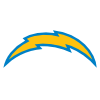 Chargers 30
Chargers 30 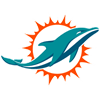 Dolphins 10
Dolphins 10
Chargers
- Austin Ekeler played 72 percent of snaps, landing in the 65-to-75-percent range for a fourth time in as many weeks. He leads all RBs with 2.73 yards per route, and only three players at any position (20-target min.) have better marks — Keenan Allen (2.95), Darren Waller (2.76) and Davante Adams (2.74), per PFF. Tarik Cohen led all RBs last season at 2.36 yards per route, good for 10th place among players with 50 or more targets, per PFF.
- While not nearly as impressive on the ground, Ekeler's mark of 3.32 yards after contact per rush puts him 16th among the 45 RBs with at least 20 carries, per PFF. His 83.0 "elusive rating" is eighth best, and he's forced the same number of missed tackles (10) on 24 catches that he has on 56 rushes. You might remember that the Chargers didn't always remove Melvin Gordon on passing downs the past two seasons? I think we can say goodbye to the plan, even if Gordon does take the lead job (which he wouldn't, if I had a say in the matter).
- Dontrelle Inman played 50 percent of snaps and actually saw one more target (seven) than Keenan Allen, finishing with a team-high 76 receiving yards.
- The rest of the Chargers' skill-position players rotated, with TE Sean Culkin, TE Lance Kendricks, RB Troymaine Pope, WR Geremy Davis and WR Andre Patton all landing snap shares between 36 and 58 percent.
- Allen still leads the NFL in targets (48) and target share (33 percent), but his air-yard share (40 percent) is down to No. 5 among players with three or more games player, per airyards.com.
- Ekeler's 17 percent target share is only ninth-largest among RBs, but his QB is tied for the sixth-most passes (146), and he's caught 24 of 25 targets for 270 yards. I guess the regression warning isn't necessary, considering everyone is already worried about Gordon coming back.
Dolphins
- Preston Williams and DeVante Parker each played 83 percent of snaps. Parker ran 27 routes on Josh Rosen's 28 dropbacks, while Williams ran 24, per PFF. No other Miami player had more than 17 routes, and that was Mike Gesicki, who didn't draw a target.
- For the season, Gesicki is sitting at 0.54 yards per route, the worst mark on his team. Williams (1.72), Parker (1.38) and Kenyan Drake (1.43) at least have respectable numbers.
- Parker's 20.3 aDOT is longest in the league among players with eight or more targets (he has 24 targets).
- Williams is seeing a bit more variety, with a 12.1 aDOT on 30 passes in his direction (including 25 the past three weeks).
- Williams has drawn 29 percent of targets in Rosen's two starts, putting him far ahead of Drake (17 percent), Parker (15 percent) and Jakeem Grant (12 percent).
- Drake played 54 percent of snaps, while Mark Walton played 25 percent and Kalen Ballage just 15 percent. Ballage has been bad even by 2019 Dolphins standards — 1.5 YPC on 19 carries and 2.9 YPT on 10 targets.
- I'm not sure if you've heard this, but Ryan Fitzpatrick went to Harvard.
 Seahawks 27
Seahawks 27  Cardinals 10
Cardinals 10
Seahawks
Brian Schottenheimer's wife is apparently the biggest critic of Seattle's offense.
Wife: "You run it up the middle, and I don't like that."
Schottenheimer: "Yeah, join the club."
— Joe Fann (@Joe_Fann) September 26, 2019
- Give Brian Schottenheimer some credit: he may ignore common sense and analytics, but at least he listens to his wife. The Seahawks had 12 passes and fours runs on their first two drives Sunday in Arizona, jumping out to a defense-assisted 17-3 lead. Russell Wilson finished with just 28 attempts, because teams that chuck the ball around early in games often have the privilege of playing ground-and-pound later on (see: Titans, Tennessee above). Then again, this was way less fun than watching Wilson try to erase a multi-score deficit... maybe we should tell Schottenheimer's wife and the analytics nerds to shut up.
- Chris Carson played 76 percent of snaps, finishing with 26 of 29 RB opportunities (90 percent) and zero percent of fumbles.
- C.J. Prosise was limited to 22 percent snap share, three carries and no targets, but he did score a nine-yard TD late in the fourth quarter. He ran 10 routes on Wilson's 34 dropbacks, compared to 20 for Carson, per PFF.
- Will Dissly played 79 percent of snaps and ran 23 routes, but his 7-57-1 receiving line was pathetic compared to what other TEs have done to the Cardinals. (I'm kidding. Kind of.)
- Dissly has drawn 20 targets the past three weeks; fewer than Tyler Lockett (30) but more than DK Metcalf (17).
- Metcalf was down to a 64 percent snap share, after landing between 78 and 88 percent each of the previous three weeks. He was second on the team with 25 routes, but he lost some playing time to David Moore (40 percent of snaps, 15 routes). Moore's reintroduction was less of an issue for Metcalf the previous week because the Seahawks ran 10 plays from four-wide sets while playing from behind against New Orleans. The team ran just four snaps (and two passes) from four-wide formations against Arizona — a return to the minimal usage we saw Weeks 1 and 2.
Cardinals
- The 2019 season has seen five single-game QB performances with an aDOT under 5.0, including both of the past two games for Kyler Murray, who previously had marks of 10.5 in Week 1 and 7.2 in Week 2. There's nothing wrong with throwing a lot of short passes, but this is too exaggerated.
- David Johnson played 86 percent of snaps and took 22 of 28 RB opportunities (79 percent), while Chase Edmonds logged 21 percent with six carries and no targets.
- Johnson is now tied for second among RBs with 28 targets, though his 17 percent share is only 10th-largest.
- Trent Sherfield led the team with 36 routes on Murray's 38 dropbacks, followed by Christian Kirk (33), Larry Fitzgerald (33), DJ (30) and KeeSean Johnson (26).
- Andy Isabella had eight snaps and no targets, but he did take a carry for five yards.
- The Cardinals used 10 personnel (one RB, four WRs) on 53 percent of snaps. That's their lowest rate this season, but not by a big margin... and it's still far more than any other team.
 Buccaneers 55
Buccaneers 55  Rams 40
Rams 40
Buccaneers
- Jameis Winston's 9.7 aDOT was low compared to his season mark of 10.7 (third longest), but it was still sixth longest of Week 4. His two sacks were the fewest he's taken in a game this year, while 43 dropbacks matched a season high from the previous week, per PFF.
- Ronald Jones took over the lead backfield role, handling 49 percent of snaps and 20 of 35 RB opportunities (57 percent).
- Peyton Barber played 26 percent, gaining just 19 yards from nine carries and a target.
- Dare Ogunbowale played 28 percent, with one carry and four targets.
- O.J. Howard played 88 percent of snaps, but he ran just 26 routes on Winston's 43 dropbacks, three fewer than No. 3 receiver Bobo Wilson (29), per PFF. The Bucs used Howard as a pass blocker on eight snaps, and the nine snaps he didn't play were all passes.
- Cameron Brate played 18 snaps (24 percent), running 15 routes and run blocking three times, per PFF.
- Each of Chris Godwin's 12 catches went for a first down, including three passes he caught at or behind the line of scrimmage, per PFF. He produced 6.8 YAC per reception, pushing him up to a 5.7 average for the season (4.2 last year). His 11.4 aDOT isn't much different from 2018 (11.9) or 2017 (13.2).
- Godwin went for 7-106-1 on nine targets from the slot (62.5 percent of his routes), compared to 5-66-1 on five targets outside, per PFF. For the season, he's run 61 percent of his routes from the slot, where he's been targeted 19 percent of the time and produced 2.49 yards per route. Godwin has been even better outside, drawing a target on 22 percent of routes while producing 2.74 yards per route. The only possible complaint? He's drawn just five targets 20-plus yards downfield, while Mike Evans has already seen 11 (including five catches), per PFF.
- Evans and Godwin are the only players on the team with target share above nine percent.
Rams
- Jared Goff's 68 pass attempts were the most in any regular-season game since 2001 and tied for third-most all-time. Drew Bledsoe holds the record with 70, but it happened in an overtime game. Vinny Testaverde threw 69 passes in regulation against the 2000 Ravens defense (yikes) in a 34-20 loss. (h/t to pro-football-reference.com's play index)
- The Rams are one of three teams — along with the Dolphins and Jets — in the bottom five of PFF's grades for both run blocking and pass blocking. Titans lineman Rodger Saffold, who left the Rams during the offseason, has the 11th-best PFF grade among guards. On the other hand, Rams guards Austin Blythe, Joe Noteboom and Jamil Demby somehow are all ranked bottom four among qualifiers at the position. Right tackle Rob Havenstein has also struggled, allowing three sacks and 14 pressures while committing five penalties, per PFF. Left tackle Andrew Whitworth is the Rams' only lineman who doesn't have a bottom-five PFF grade at his position.
- Goff's average time from snap to throw is down to 2.75 seconds this year, after 2.93 in 107 and 2.95 in 2018.
- Todd Gurley played 76 percent of snaps and saw 16 of 22 RB opportunities (73 percent). He caught seven passes, but he also had two drops and only forced one missed tackle on those receptions, per PFF. His 10 percent target share for the season is well below his marks from 2017 (18 percent) and 2018 (16 percent).
- Robert Woods, Cooper Kupp and Brandin Cooks all have run routes on more than 90 percent of Goff's dropbacks this year, per PFF.
- Kupp's 7.3 aDOT is easily shortest of the three, but it's contributed to a 70 percent catch rate, and his 27 percent target share is sixth-largest in the league. The Rams didn't have any one player above 23 percent the past two seasons.
- Robert Woods is now at 22 percent target share, after 22 percent in 2017 and 23 percent in 2018. His 9.0 aDOT is down a bit from 2017 (10.2) and 2018 (11.3).
- Brandin Cooks is down to 18 percent target share, after 22 percent last year. His 13.0 aDOT is nearly identical to last year's mark of 12.7.
- Gerald Everett played 57 percent of snaps, and Tyler Higbee played 44 percent. Everett had a 5-44-1 receiving line, but he ran a route on just 54 percent of Goff's dropbacks.
- The Rams used 11 personnel on 90 percent of their plays. They've now used it on 87 percent for the season.
- The Rams are one of eight NFL teams that Ryan Fitzpatrick has started a game for.
 Vikings 6
Vikings 6  Bears 16
Bears 16
Vikings
- Kirk Cousins had the fourth-shortest aDOT (5.2) of Week 4, bringing his season mark down to 7.0 (10th-shortest). PFF grades him No. 30 overall among 37 qualified quarterbacks, ahead of only Josh Allen, Josh Rosen, Cam Newton, Ben Roethlisberger, Mitchell Trubisky, Mason Rudolph and Case Keenum.
- Dalvin Cook played 79 percent of snaps and had a season-high six catches, but both of his incomplete targets were drops and he didn't force any missed tackles on the receptions, per PFF.
- Cook faced eight defenders in the box on 36 percent of his carries, the eighth-highest rate among RBs in Week 4. His 28 percent rate for the season is seventh-highest among qualified runners, per NFL Next Gen Stats. He's down to 11th of 45 RBs (20-carry min.) in PFF's elusive rating, with 19 avoided tackles on 86 touches and the ninth-best yardage average after first contact on carries (3.58 yards).
- Adam Thielen ran a route on 41 of Cousins' 42 dropbacks, ahead of Stefon Diggs (36), Bisi Johnson (28), Cook (27), Kyle Rudolph (26) and Irv Smith Jr. (18).
- Smith has seen a snap share between 42 and 50 percent every week this season, while Rudolph has yet to dip below 84 percent.
- Bisi Johnson played 58 percent of snaps in the first game without Chad Beebe (IR - ankle).
- Rudolph's mark of 0.43 yards per route puts him 56th among 57 tight ends with five or more targets, per PFF.
- Diggs is now up to 2.21 yards per route, placing 18th of 92 WRs with double-digit targets, per PFF. It's actually a much higher mark than he had last season (1.72), but he's averaging 24 routes per game instead of 40.
- The Vikings had no choice but to throw in this contest, and they still handed the ball to Dalvin Cook on 1st-and-10 five times (for 18 yards) in the second half.
Bears
- David Montgomery played a season-high 69 percent of snaps, even running more routes (19) than Tarik Cohen (17), per PFF. Montgomery is 31st of 45 in PFF's elusive rating, with 12 missed tackles on 66 touches and 2.26 yards after contact per carry (39th).
- Cohen played 39 percent of snaps, registering 18 in the backfield, seven in the slot and two outside, per PFF. His backfield snaps have more than doubled his slot snaps in every game since Week 1.
- Anthony Miller played a season-high 63 percent of snaps, with 40 of his 43 plays coming from the slot, per PFF.
- Javon Wims replaced Taylor Gabriel (concussion) with 94 percent of snaps, the largest share for any of Chicago's skill-position players.
- Trey Burton played 58 percent of snaps, running a route on 23 of the team's 35 dropbacks.
- Allen Robinson played 88 percent of snaps, running a route on each of the 35 dropbacks.
 Jaguars 26
Jaguars 26  Broncos 24
Broncos 24
Jaguars
- Gardner Minshew's 11.3 aDOT was third-longest of Week 4, pushing his season mark up to 7.7 (23rd). He finished with his lowest completion percentage (57.6) and most sacks (five) in any game, while his PFF grade (66.9) for the week was 14th among 32 QBs.
- Leonard Fournette was down to 84 percent of snaps after logging 97 and 100 percent the previous two weeks. The Jaguars obviously had to give him a few breathers, considering he had 29 carries and two catches for 245 scrimmage yards.
- Fournette is now second in the league with 4.35 yards after contact per carry, though 13 RBs have forced more missed tackles on rushes than his 10, per PFF.
- Ryquell Armstead played 16 percent of snaps with eight carries and one catch, but just one of his touches came before halftime.
- Dede Westbrook played a season-low 62 percent of snaps, but he caught each of his five targets for 62 yards, forcing three missed tackles on those plays, per PFF.
- Westbrook and D.J. Chark ran routes on 35 of Minshew's 39 dropbacks, while Chris Conley was down at 30, behind Fournette (34), per PFF.
- James O'Shaughnessy played 59 percent of snaps and ran 27 routes, while fellow tight end Geoff Swaim played 48 percent and ran 13 routes.
- Marqise Lee played 29 percent of snaps and ran five routes; he's run just 14 routes on 52 snaps this season, mostly functioning as a run blocker.
Broncos
- Joe Flacco is on track for a career high in completion percentage (66.2) and his best mark for YPA (7.3) since 2010, though the first number puts him just 14th of 34 qualified passers, and the second is down at 17th.
- Royce Freeman played 62 percent of snaps, compared to 45 percent for Phillip Lindsay. The two running backs are still forming an unusual timeshare without any delineation in terms of early/passing downs. Lindsay has a 5-to-0 advantage for inside-the-5 carries, but it still isn't clear if that's a matter of intent, as four of those carries occurred in one game (Week 3 at GB).
- Courtland Sutton played 95 percent of snaps and ran a route on 35 of Joe Flacco's 38 dropbacks, per PFF.
- Emmanuel Sanders was second among the Denver skill players for both snap share (80 percent) and routes (33), with TE Noah Fant (73 percent, 28 routes) close behind.
- DaeSean Hamilton played 62 percent and ran 25 routes, bouncing back from a zero-target outing the previous week to post 3-57-0 on five chances.
- Sanders and Sutton have seen similar usage — Sanders: 23 percent target share, 9.8 aDOT, five inside-the-10 targets. Sutton: 21 percent, 10.2 aDOT, three targets inside the 10.
 Cowboys 10
Cowboys 10  Saints 12
Saints 12
Cowboys
- Dak Prescott fell to 6.8 YPA and zero TDs after three straight games with at least 7.7 YPA and three scores (including a rush) against the Giants, Redskins and Dolphins. He's landed between 30 and 33 pass attempts each week this season.
- Prescott's +9.2 differential between completion percentage (72.4) and NFL Next Gen Stats' xCOMP% (62.3) is second-best in the league behind Russell Wilson (+10). Drew Brees (+8.5) and Kyle Allen (+7.4), Chase Daniel (+4.7) and Patrick Mahomes (+4.5) are the only other QBs above +4.0.
- The Cowboys ran the ball on 70 percent of first downs and 33 percent of second downs in the first half. For the season, they've run 59 percent of the time on first downs and 27 percent on second downs before halftime.
- Ezekiel Elliott played 97 percent of snaps, while Tony Pollard took three percent — another way the Cowboys looked like the team from last season rather than the team from Weeks 1-3.
- Elliott ranks 40th of 45 in PFF's elusive rating, though his 2.70 yards after contact per carry is tied for 31st. Last year, he was 29th of 47 in elusive rating (100-carry min.) and 15th in yards after contact per carry (3.12).
- Randall Cobb played 81 percent of snaps and ran a route on 30 of Prescott's 35 dropbacks, per PFF.
- Devin Smith played 79 percent and ran 28 routes; Jason Witten also played 79 percent but ran 24 routes.
- Blake Jarwin was down at 29 percent and 10 routes.
Saints
- Teddy Bridgewater's 6.4 aDOT was 11th-shortest of the week, but it was a big difference from 3.3 the week prior. His interception came on a 3rd-and-13 pass that bounced off Ted Ginn's hands.
- Alvin Kamara leads the league with 23 avoided tackles on rushes and 31 avoided tackles overall, despite ranking just 13th in carries (59) and 10th in touches (79), per PFF. He's No. 2 in PFF's elusive rating, behind only Duke Johnson (who has 31 touches).
- Kamara played 77 percent of snaps, limiting Latavius Murray to 25 percent.
- Michael Thomas ran 36 routes on Bridgewater's 37 dropbacks, ahead of Ginn (32), Kamara (26), Jared Cook (23), Austin Carr (21) and Josh Hill (16), per PFF.
- Hill actually played more snaps (58 percent) than Cook (56 percent).
- Target share in Bridgewater's two starts: 28 percent for Thomas, 23 percent for Kamara, 18 percent for Ginn, 14 percent for Cook, 11 percent for Hill.
- Thomas' aDOT the past two weeks was 7.5 — similar to his 7.8 from last year and 8.5 from Weeks 1-2 this year.
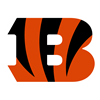 Bengals 3
Bengals 3  Steelers 27
Steelers 27
Bengals
- Andy Dalton took eight sacks and had just one completion go for more than 15 yards. His 7.1 aDOT for the season is 11th-shortest, and his completion percentage (61.4) is the worst among 19 QBs with an aDOT below 8.0. The six-point differential between his completion percentage and xCOMP% (67.4) is sixth-worst in the league, including dead last among QBs that have started more than two games, per NFL Next Gen Stats.
- Joe Mixon logged 61 percent of snaps and 20 of 27 RB opportunities (74 percent), while Giovani Bernard played 33 percent and saw one carry and six targets.
- Tyler Boyd (93 percent) and Auden Tate (91 percent) saw more playing time than John Ross (65 percent) and Damion Willis (35 percent).
- Ross made it through a game without a drop for the first time this year, but he still leads the league with five, per PFF. He at least has more catches (16) than drops, which is more than Kalen Ballage can say.
- Boyd and Tate ran 43 routes apiece on Dalton's 46 dropbacks, far ahead of Ross (28), Tyler Eifert (23), Mixon (19), Willis (18) and Bernard (15), per PFF.
- C.J. Uzomah played 41 percent of snaps, but he didn't draw any targets and has seen just one since Week 1.
- The Bengals land in the bottom half of the league for every category in PFF's team grades — passing (25th), pass blocking (29th), receiving (25th), rushing (26th), run blocking (23rd), run defense (27th), tackling (32nd), pass rushing (19th, not so bad!), pass coverage (31st, that's more like it) and even special teams (20th).
Steelers
- Mason Rudolph had the highest completion percentage (85.7) of Week 4, courtesy of the shortest single-game aDOT (3.2) of the season.
- James Conner played 64 percent of snaps, while Jaylen Samuels took 46 percent and Benny Snell took 12 percent.
- Conner and Samuels both had exactly 10 carries, eight targets and eight catches. Samuels took some direct snaps as part of a gameplan that definitely wasn't an implicit admission of Rudoloh's inadequacy as an NFL starting quarterback. Definitely not.
- Diontae Johnson played 63 percent of snaps and accounted for 51 percent of the team's air yards... with a 6.2 aDOT.
- James Washington logged 76 percent of snaps and drew just one target (an incompletion that encompassed 22 air yards).
- Nick Vannett stepped right in with 75 percent of snaps, compared to 42 percent for rookie tight end Zach Gentry.
- JuJu Smith-Schuster played 73 percent of snaps, his smallest share since a Week 10 blowout last season. On top of all the other issues, Smith-Schuster's target share is down to 19 percent for the season. He saw 24 percent last season on a team that led the league with 43.1 pass attempts per game. The Steelers now rank 18th with 34.8 passes per game.
- Johnson led the team with 25 routes on Rudoloph's 28 dropbacks, followed by Smith-Schuster (24), Washington (24), Vannett (21), Conner (20) and Samuels (13).
- Yes, Samuels was targeted on eight of his 13 routes. Not sure if you've heard, but he actually played some tight end and H-Back in college!
Editor's Note: Many stats that include a player's rank in a category don't account for the Monday game. Posting the article by Tuesday morning requires much of the research to be done before MNF.

